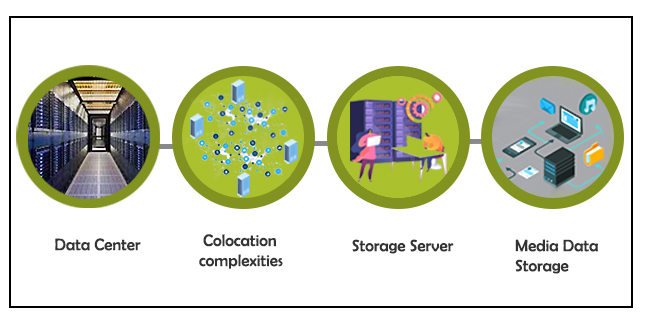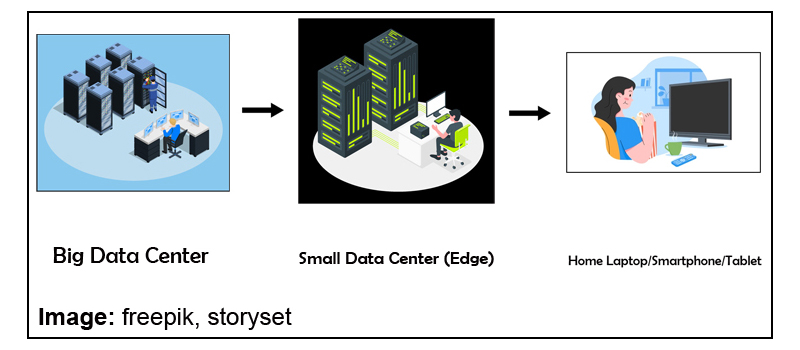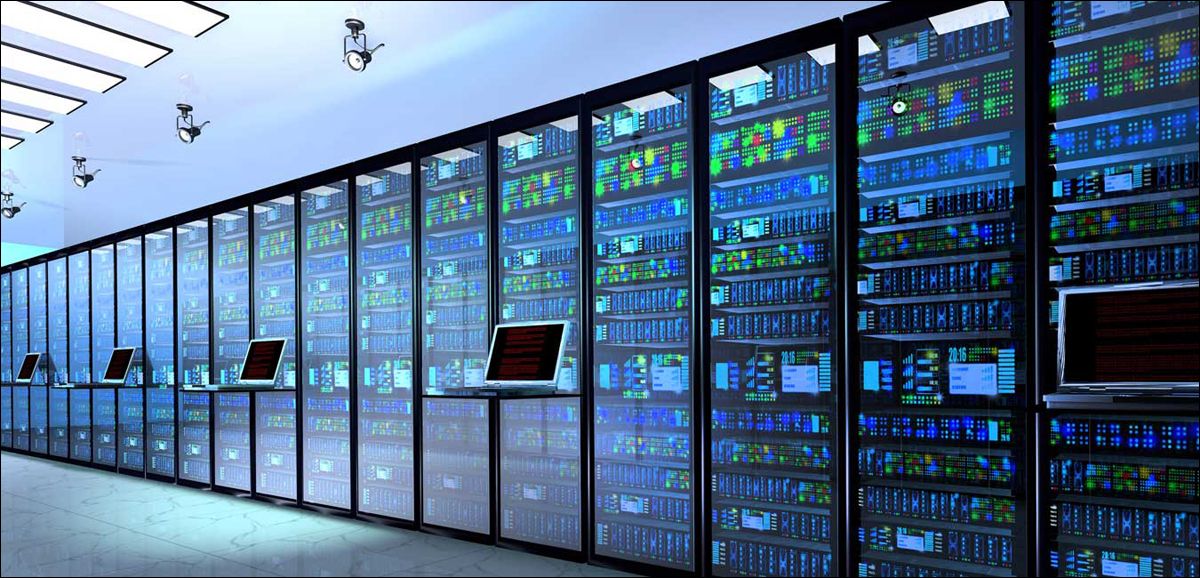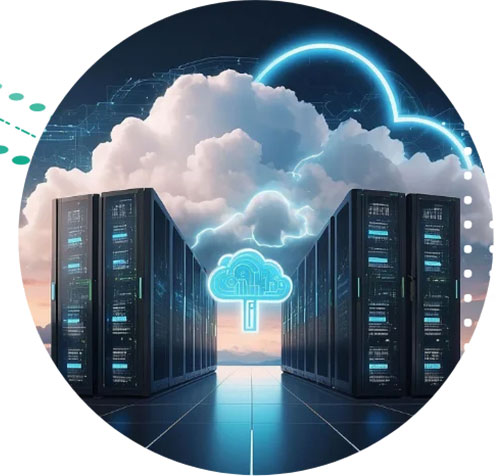How OTT platforms provide seamless content – A Data Center Walkthrough
With the number of options and choices available, it almost seems like there’s no end to what you can and can’t watch on these platforms. It shouldn’t be difficult for a company like Netflix to store such a huge library of shows and movies at HD quality. But the question remains as to how they provide this content to so many people, at the same time, at such a large scale?
The India CTV Report 2021 says around 70% users in the country spend up to four hours watching OTT content. As India is fast gearing up to be one of the largest consumers of OTT content, players like Netflix, PrimeVideo, Zee5 et al are competing to provide relevant and user-centric content using Machine Learning algorithms to suggest what content you may like to watch.
With the number of options and choices available, it almost seems like there’s no end to what you can and can’t watch on these platforms. It shouldn’t be difficult for a company like Netflix to store such a huge library of shows and movies at HD quality. But the question remains as to how they provide this content to so many people, at the same time, at such a large scale?
Here, we attempt to provide an insight into the architecture that goes behind providing such a smooth experience of watching your favourite movie on your phone, tablet, laptop, etc.
Until not too long ago, buffering YouTube videos were a common household problem. Now, bingeing on Netflix shows has become a common household habit. With Data-heavy and media-rich content now being able to be streamed at fast speed speeds at high quality and around the world, forget about buffering, let alone downtime due to server crashes (Ask an IRCTC ticket booker). Let’s see how this has become possible:
Initially, to gain access to an online website, the data from the origin server (which may be in another country) needs to flow through the internet through an incredulously long path to reach your device interface where you can see the website and its content. Due to the extremely long distance and the origin server having to cater to several requests for its content, it would be near impossible to provide content streaming service for consumers around the world from a single server farm location. And server farms are not easy to maintain with the enormous power and cooling requirements for processing and storage of vast amounts of data.
This is where Data Centers around the world have helped OTT players like Netflix provide seamless content to users around the world. Data Centers are secure spaces with controlled environments to host servers that help to store and deliver content to users in and around that region. These media players rent that space on the server rather than going to other countries and building their own and running it, and counter the complexities involved in colocation services.

How Edge Data Centers act as a catalyst
Hosting multiple servers in Data Centers can sometimes be highly expensive and resource-consuming due to multiple server-setups across locations. Moreover, delivering HD quality film content requires a lot of processing and storage. A solution to tackle this problem are Edge Data Centers which are essentially smaller data centers (which could virtually also be a just a regional point of presence [POP] in a network hub maintained by network/internet service providers).
As long as there is a POP to enable smaller storage and compute requirements and interconnected to the data center, the edge data center helps to cache (copy) the content at its location which is closer to the end consumer than a normal Data Center. This results in lesser latency (or time taken to deliver data) and makes the streaming experience fast and effortless.
Role of Content Delivery Networks (CDN)
The edge data center therefore acts as a catalyst to content delivery networks to support streaming without buffering. Content Delivery Networks (CDNs) are specialized networks that support high bandwidth requirements for high-speed data-transfer and processing. Edge Data Centers are an important element of CDNs to ensure you can binge on your favorite OTT series at high speed and high quality.

Although many OTT players like Sony/ Zee opt for a captive Data Center approach due to security reasons, a better alternative would be to colocate (outsource) servers with a service provider and even opt for a cloud service that is agile and scalable for sudden storage and compute requirements. Another reason for colocating with Service providers is the interconnected Data Center network they bring with them. This makes it easier to reach other Edge locations and Data Centers and leverage on an existing network without incurring costs for building a dedicated network.
Demand for OTT services has seen a steady rise and the pandemic, in a way, acted as a catalyst in this drive.
However, OTT platform business models must be mindful of the pitfalls.
Target audience has to be top of the list to build a loyal user base. New content and better UX (User Experience) could keep subscribers, who usually opt out after the free trial, interested.
The infrastructure and development of integral elements of Edge Data Centers are certain to take centerstage to enable content flow more seamlessly in the future that would open the job market to more technical resources, engineers and other professionals.
Cloud powered by Content Delivery Network – The Elixir of Internet World
Are we all aware of the staggering statistics about Future of Internet?
India will add 40% of the world’s incremental Internet users by 2020!
More than 175 million people will do their purchases online because of convenient payment options like e-wallets and easy payments. E-commerce business will be worth $17 billion at the end of FY 2016.
82% of CMOs (across all Industry verticals) report that the Brand health of their organization is directly proportional to the number of visitors of their websites.
When computing power was at a premium in 1990s, web pages were often hosted in local standalone servers and were served as unchanging text files. This type of static content is efficient, but it can quickly become stagnant and viewers lose interest. With the advent of low-cost computing and faster Internet speeds, the concept of Dynamic Content was burgeoned that could capture user attention due to sheer dynamism and possibilities of creativity. The low-cost pay-as-you-go model is ensured via virtualization when we have transformed to Cloud. In bygone days, IT would do a CAPEX investment in Hardware purchase and invest in maintenance especially when your best hired resources should be focusing on core business.
For the organizations where-in Internet facing Application/Site performance and users experience is the key to growth, Cloud Services powered by best CDN (Content Delivery Network) is the panacea. Quick, reliable, secure and personalized viewing experiences across all the devices on your fingertips is what CDN offers.
Empiricism is the theory that all knowledge is based on experience derived from the senses. That’s where human beings sense of feeling will always reign over machines or robots. Businesses in all verticals flourish only when Empiricism gives way to a satisfied customer. It thrives on the fact that customer thinks exactly the thoughts which you want them to think so that they get hooked-on and his brain signals his fingers again and again to key in just the URL of your website and better still – don’t even open the competitor’s website on the adjacent tab.
CDN service providers delivers Internet contents like – web-objects, Applications, live/on-demand streaming media and social networks to the end-users.
Load-time, Availability, Response time, Security are few parameters on which a good CDN is adjudged.
Direct visible impact of CDN is on Business Revenue, Business Agility and increase in ability to take it to global scale.
How?
Take an example, Mr. ABC, the CIO of organization – XYZ is sitting in US with best Internet Connection speed (25 Mbps), his site is hosted in Data Center in India with Best Compute, Storage, and Network, Redundancy ensured at the First mile. When he accesses his website – www.xyz.com, he starts counting – 1, 2, 3, 4, 5, 6, 7…..while his eyes are forced to see that vexatious Loading icon.
Oops, it takes 8 seconds to load the Home Page of his own Brand. If I were a site visitor, I would definitely go to next tab and load another site to do justice to those 8 wasted seconds. So result is rise in distraction, confusion and higher chances of site abandonment and hence Revenue.
That’s where the concept of CONTENT DELIVERY NETWORK was incepted.
Following are the series of steps executed when customer keys in his web-site address on the address bar of his browser:
Step 1: Browser contacts DNS for conversion into IP address
Step 2: Browser will establish connection with the web server that hosts the website using IP address
Step 3: Retrieval of HTML code over the internet of the requested web-page
Step 4: HTML Content is delivered over the internet to the browser which then displays the HTML page – bare bone html structure, followed by hyper-linked stuff – static images etc. and lastly Dynamic content.
Step 5: When you leave the browser window idle for long or close it, the connection with Web server will end
So Step#4 above entails the need of a CDN to ensure rendering of page with lightening speeds. In absence of CDN, the complications of middle-mile will ruin all the performance optimizations, best coding practices you might have followed in creating your website.
Static files like images, javascript, css files can be cached by the browser so that in future it doesn’t have to fetch them again. Of course, many technologies and CDNs exist which ensures caching. The Site owners face the chill wind with regard to performance only when there is good amount of Dynamic content in their website.
Dynamic content is web content that changes between subsequent requests based on user access time, user preferences and personal information in order to ensure an engaging online experience. Some of the world’s largest websites are powered primarily by dynamic content as static content cannot capture user interest. According to recent studies, Seventy-four percent of online consumers get frustrated when a website promotes content that isn’t tailored to their interests
E.g. Amazon is delivering you a personalized content experience in an attempt to make you buy more. Notice the section called “Buy It Again” below the items you want to purchase. Amazon is populating this section by pulling your previous orders from its backend servers. This is much more effective for upselling purposes than listing random items.
The very reason why site performance is impacted in case of dynamic content is due to enforced round trips to the origin server, as it cannot be cached.
Only few CDNs on the planet give the required acceleration to dynamic content. Several techniques like route optimization are needed to optimize communication between the CDN edge servers and origin infrastructure to deliver dynamic content to the user that avoids Internet problem spots.
So the philosophy of having good dynamic content in your website with the lure of increasing user interest and hence hits, should be carefully chalked out along with the appropriate choice of CDN adoption.
Walking with the false myths of considering CDN as just a redundancy (or good-to-have) service can jeopardize the Business strategy significantly and will eventually become the bane of Business advancement prospects.
Facing performance pressures with your Websites and Web Portals? Feel free to reach out to us at cdn@sifycorp.com.




























































